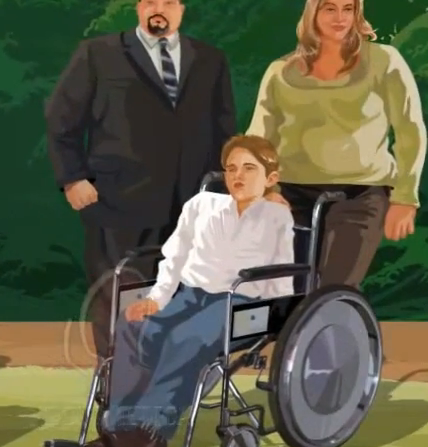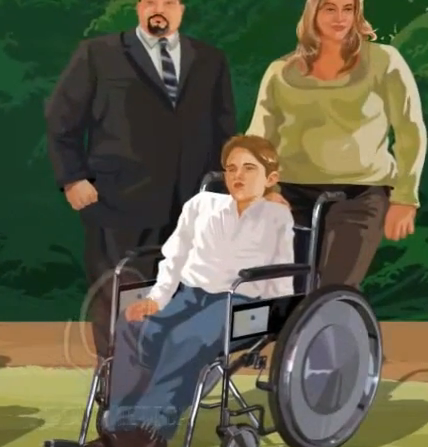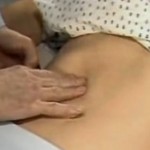Cerebral palsy is a term that is used to describe a group of non-progressive disorders caused because of the damage to some specific areas of the brain. The defect hampers a person’s ability to control his movement as well as posture. It leads to weakness in muscles and can be disabling from a mild to severe level depending upon the person and the conditions. In New Zealand almost 7000 people are affected by cerebral palsy.
Symptoms
Initial signs start appearing before the age of a year and a half. The normal development in infancy is not there such as smiling or rolling. Other symptoms are:
- Stiffness in muscles and Floppiness.
- Movements can be slow, abnormal, jerky and involuntary such as Drooling.
- Speech disorders.
- Lack of control on the maintenance of bladder or bowel.
- Shaking hands and legs.
- Difficulty in identifying certain objects by touch.
- There can be slight intellectual disorders in some cases but the intelligence is usually normal.
- Hearing and Vision impairment.
- Difficulties in chewing and swallowing.
Causes
- This disorder occurs because of damage to certain parts of the brain, which can be manifested through diagnostic exams like MRI scans. It affects 2 to 2.5 per l000 live births and among equally among all sexes.
- Damage to specific parts of the brain can occur due to lack of oxygen supply to the in pregnancy, Maternal infection, Premature birth and Blood group incompatibility of the mother and the baby.
- Head injuries and illness such as meningitis during early childhood.
- Genetic disorders.

Types of cerebral palsy
Mainly there are four kinds of cerebral palsy:
- Spastic cerebral palsy
- Athetoid (Dyskinetic) cerebral palsy
- Ataxic cerebral palsy
- Mixed cerebral palsy
Treatment
Like most of the non-progressive disorders it cannot be cured but it is manageable through the following therapies and treatments like medications and training for mental and physical growth:
- Physiotherapy
It involves the use of designed activities to boost the functioning of those parts that are unaffected and to maximize the affected ones.
- Occupational Therapy
This one supports the daily needs for survival and includes dressing up, holding things, cleaning and other vocational activities.
- Speech Language Therapy
Because of the affects on the speech this therapy helps to improve communication skills and difficulties in chewing, eating or swallowing.
- Educational Therapies and Cognitive education
It includes the betterment of learning skills with easier techniques for improving various parts of learning such as motor, cognitive, social and emotional skills.
- Medications:
Anticonvulsant medications and Muscle relaxants are often used to control seizures and contracted muscles. On the other hand, to control tremors, drooling and urinary incontinence, Anticholinergic medications are used. Botox Injections are often given to reduce muscle spasms and stiffness and they last for three to six months.
- Surgical intervention:
In case of serious muscle contractions one might need a surgery involving the enhancement of tendons or tendon transfers. It’s also recommended in case of inadequate nutrition in order to insert a feeding tube into the stomach.
Life expectancy for Cerebral palsy
Life expectancy in cerebral palsy depends upon the complexities of the conditions and the problems that are associated with it such as heart, kidney and gastrointestinal problems. Often people with mild forms of cerebral palsy have life spans similar to that of the general population. The ones with severe forms are likely to have a shorter life span. With the advancement in medical care and science the life span has increased.
Living with this disease can also be a normal and qualitative with proper care, therapies and medications as well as assistive technology and special education services. At times a newborn can die because of this condition but with timely diagnosis the chances of survival can be increased such as in the case of a severe, low birth weight or prematurity.
Most of the children with cerebral palsy get diagnosed within the first 5 years of life. With proper diagnosis it is easier to focus on the priorities such as major mental and physical impairments like oral motor dysfunction, facial muscle impairment, difficulties in chewing and swallowing and even speaking. Most of the times these conditions are not really lethal, but they make the child more vulnerable to infections. Irrespective of the conditions a short life can be fought with proper care of health conditions. A lot of children with such severe factors have lived an almost normal life span. In order to give the patients a normal healthy life it is important for parents or caregivers and Healthcare professionals to carefully monitor the treatment and be aware of any changes that take place. Taking care of everyday needs with a strong mental and physical support is inevitable.

